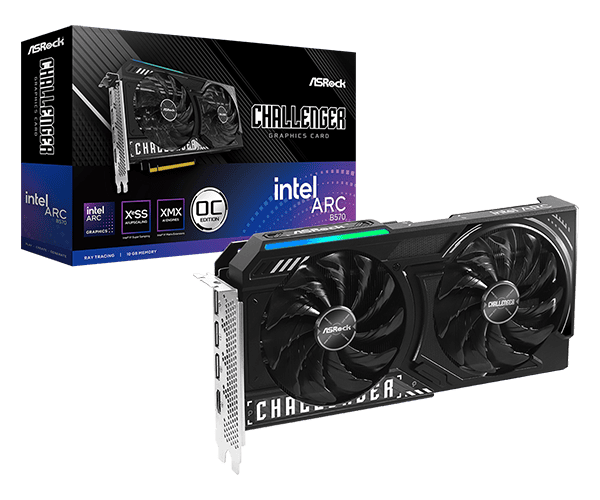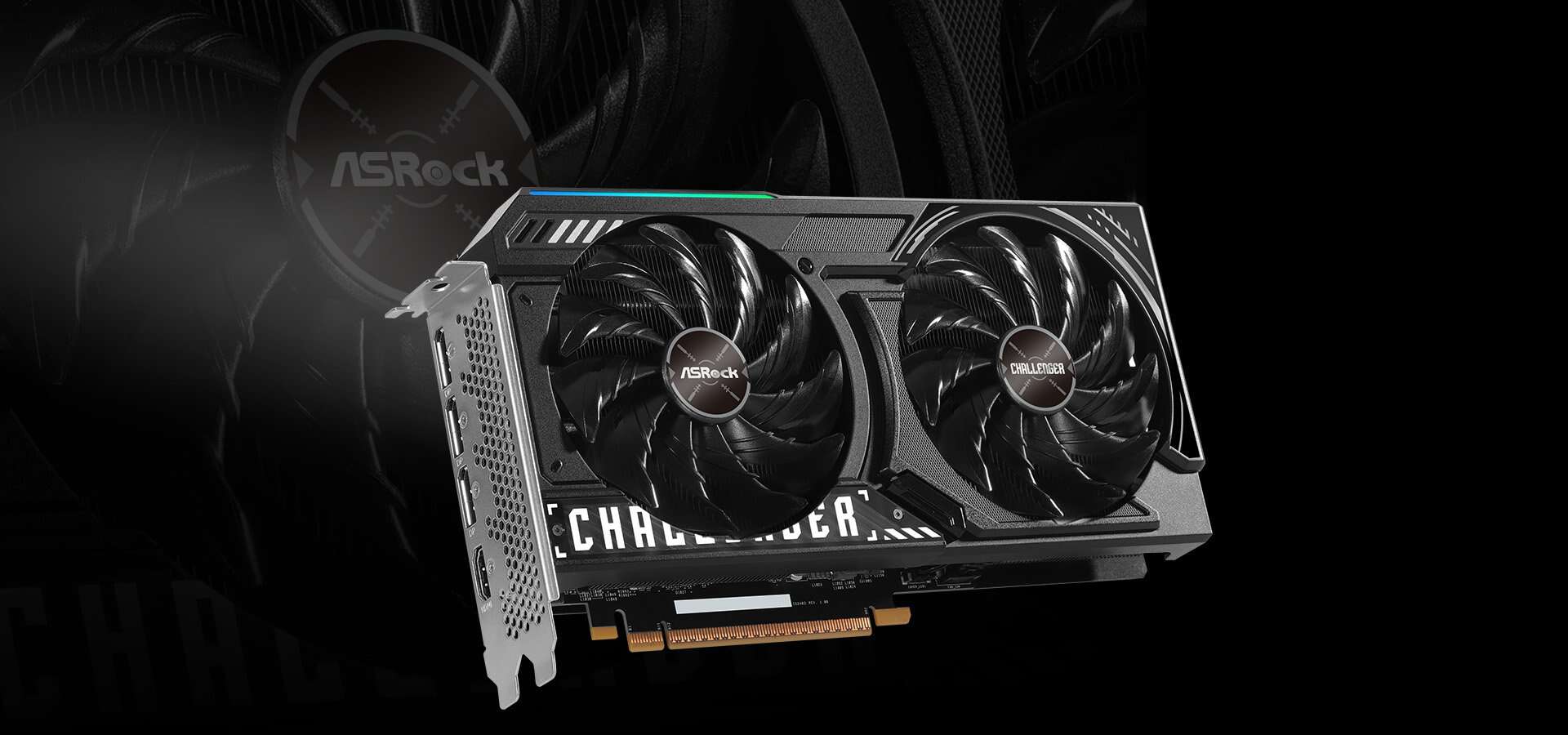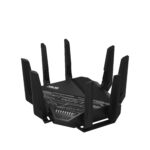Intel has released its latest graphics card, the Arc B570, bringing a new option to the mid-range GPU market. The Intel Arc B570 offers a compelling blend of performance and value, priced at $219. This GPU aims to provide gamers and content creators with an affordable yet capable solution for their graphics needs.
The Arc B570 is part of Intel’s Battlemage GPU lineup, building on the success of its predecessor. It features the same Xe2 architecture as its more powerful sibling, the B580, but with some adjustments to hit a lower price point. These changes include a slightly reduced clock speed and fewer Xe cores, making it an attractive option for budget-conscious consumers.

Gamers and content creators will appreciate the B570’s modern features and AI acceleration capabilities. The GPU includes Intel Xe Matrix Extensions (XMX) AI engines, which can boost performance in AI-enhanced applications and games. This positions the B570 as a versatile card for both gaming and creative workloads.
Exploring the Intel Arc B570 Graphics Card
Battlemage Arrives for Mainstream Gamers
The Intel Arc B570 graphics card has officially launched, bringing Intel’s second-generation Battlemage (Xe2) architecture to the mainstream market. This new GPU aims to deliver improved performance and features compared to its predecessor, targeting gamers looking for a solid 1080p and 1440p gaming experience without breaking the bank.
Key Specifications and Features
Built on a 5nm process, the B570 promises better power efficiency and higher clock speeds. It supports DirectX 12 Ultimate, which includes features like ray tracing for realistic lighting and reflections, variable rate shading for optimized performance, and mesh shaders for enhanced geometry detail. These technologies improve the visual quality of modern games.
Detailed Specs
Here’s a breakdown of the B570’s specifications:
| Feature | Specification |
|---|---|
| Architecture | Battlemage (Xe2) |
| Process Node | 5nm |
| Memory | 10GB GDDR6 |
| Memory Interface | 192-bit |
| PCIe Interface | PCIe 4.0 x8 |
| DirectX Support | DirectX 12 Ultimate |
| Target Resolution | 1080p/1440p |
Partner Card Variations
Several manufacturers are releasing their own versions of the Arc B570, each with unique features. ASRock’s Challenger model runs at a 2600 MHz core clock and uses a dual-fan cooling system. Sparkle’s GUARDIAN OC edition boosts the clock speed to 2660 MHz and adds more advanced cooling with RGB lighting and a metal backplate.
Performance Expectations
The Arc B570 is designed to compete with other mid-range graphics cards on the market. Early tests suggest it delivers a noticeable performance jump over the previous generation Arc A750, making it suitable for smooth gameplay in most modern titles at 1080p and even 1440p with adjusted settings. The PCIe 4.0 x8 interface might present a small bottleneck in some situations, but its impact is expected to be minimal for most users.
Pricing and Availability
The Intel Arc B570 is priced around $219 USD, making it an attractive option for budget-conscious gamers looking for decent performance without the high cost of top-tier cards. It is available now at major online retailers.
Key Takeaways
- The Intel Arc B570 offers strong performance at a competitive $219 price point
- It features Xe2 architecture and AI acceleration capabilities for enhanced gaming and content creation
- The B570 provides a balance of modern features and affordability for mid-range GPU buyers
Technical Specifications and Features
The Intel Arc B570 graphics card boasts impressive technical capabilities. It leverages advanced architecture and offers substantial memory bandwidth, while providing modern connectivity options and efficient power usage.
GPU Architecture and Cores
The Intel Arc B570 is built on the Xe2 architecture, featuring the BMG-G21 graphics processor. This GPU is manufactured using a 5 nm process, ensuring improved efficiency and performance.
The B570 supports DirectX 12 Ultimate, enabling compatibility with the latest games and graphical features. Its core configuration includes Xe2 cores optimized for high-performance gaming and content creation tasks.
Clock speeds for the B570 are competitive within its price range, though specific numbers are not yet confirmed. The card’s architecture allows for efficient parallel processing, boosting performance in modern games and applications.
Memory and Bandwidth
The Arc B570 comes equipped with 10GB of GDDR6 VRAM. This generous amount of video memory provides ample space for high-resolution textures and complex game assets.
Memory bandwidth is a crucial factor in graphics card performance. The B570’s GDDR6 memory ensures fast data transfer between the GPU and VRAM, reducing bottlenecks in graphically demanding scenarios.
The card’s memory bus width and speed contribute to its overall bandwidth capabilities. While exact figures are not provided, the B570 is expected to offer sufficient bandwidth for smooth gaming experiences at 1080p and potentially 1440p resolutions.
Connectivity and Power
Intel’s Arc B570 supports modern display standards, including DisplayPort 2.1 and HDMI 2.1. These interfaces allow for high refresh rates and resolutions on compatible monitors.
The card utilizes a PCIe 4.0 interface for connection to the motherboard, ensuring optimal data transfer speeds between the GPU and other system components.
Power efficiency is a key consideration in the B570’s design. While exact power consumption figures are not specified, the card is expected to offer a balance between performance and energy use.
The B570 likely requires a single 8-pin or 6-pin power connector, making it compatible with a wide range of power supplies. This accessibility is beneficial for users looking to upgrade their systems without extensive PSU modifications.
Performance and Gaming
The Intel Arc B570 delivers solid performance for 1080p and 1440p gaming. It offers competitive frame rates and supports advanced features like ray tracing and AI-powered upscaling.
Comparative Analysis
The Arc B570 competes well against similarly priced GPUs in the $200-$250 range. It outperforms the previous generation Arc A750 by about 24% in most benchmarks. The B570 trails slightly behind the Nvidia RTX 4060 and AMD Radeon RX 7600 in raw performance, but offers a compelling price-to-performance ratio.
In 1080p gaming, the B570 achieves 60+ fps in most modern titles at high settings. At 1440p, it maintains playable framerates with medium to high settings in demanding games.
The GPU’s ray tracing capabilities are decent for its price point. It handles basic ray tracing effects well but struggles with more intensive implementations compared to Nvidia’s offerings.
Real-World Gaming Scenarios
In popular titles, the Arc B570 shows its strengths:
- Forza Horizon 5: 90+ fps at 1080p Ultra settings
- Call of Duty: Black Ops 6: 75-80 fps at 1080p High settings
- Cyberpunk 2077: 60+ fps at 1080p Medium settings with DLSS-like upscaling
The B570’s 2500 MHz clock speed and 8GB of GDDR6 memory provide smooth gameplay in most scenarios. Its performance in Hogwarts Legacy is particularly impressive, hitting 70+ fps at 1080p High settings.
For 1440p gaming, the B570 requires some settings tweaks or upscaling tech to maintain 60+ fps in demanding titles.
Future-Proofing and Upscaling
Intel’s XeSS upscaling technology enhances the B570’s longevity. XeSS provides a significant performance boost, allowing the GPU to handle higher resolutions and graphics settings with minimal quality loss.
The B570’s support for DirectX 12 Ultimate and hardware-accelerated ray tracing ensures compatibility with upcoming games. Its 8GB VRAM is sufficient for current titles but may become a limiting factor in future games with higher texture demands.
For AI workloads, the B570 offers decent performance thanks to its Xe Matrix Extensions (XMX) cores. While not as powerful as dedicated AI accelerators, it can handle basic AI tasks and benefit from AI-enhanced features in creative applications.







